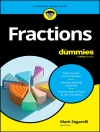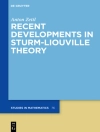Due to an increasing number of reported catastrophes all over the world, the safety especially of pedestrians today, is a dramatically growing field of interest, both for practitioners as well as scientists from various disciplines. The questions arising mainly address the dynamics of evacuating people and possible optimisations of the process by changing the architecture and /or the procedure. This concerns not only the case of ships, stadiums or buildings, all with restricted geometries, but also the evacuation of complete geographical regions due to natural disasters. Furthermore, also ‘simple’ crowd motion in ‘relaxed’ situations poses new questions with respect to higher comfort and efficiency since the number of involved persons at large events is as high as never before. In addition, as a new research topic in this field, collective animal behaviour is attracting increasing attention. All this was in the scope of the conference held in Vienna, September 28–30, 2005, the third one in a series after Duisburg (2001) and Greenwich (2003).
Tabla de materias
Pedestrian Performance Data.- Federal Investigation of the Evacuation of the World Trade Center on September 11, 2001.- Free speed distributions — Based on empirical data in different traffic conditions.- Collecting Pedestrian Trajectory Data In Real-time.- Full-Scale Evacuation Experiments in a smoke filled Rail Carriage — a detailed study of passenger behaviour under reduced visibility.- Minimum Stair Width for Evacuation, Overtaking Movement and Counterflow — Technical Bases and Suggestions for the Past, Present and Future.- Study on information guiding based on human psych-physiological responses in China.- Research on pedestrian crowd characteristics and behaviours in peak-time on Chinese campus.- Pedestrian Dynamics.- Behaviour on tunnel fire.- Earthquake — the importance of earthquake-resistant design in case of emergency evacuations.- Decision Loads and Route Qualities for Pedestrians — Key Requirements for the Design of Pedestrian Navigation Services.- Cyclone and Storm Surge, Pedestrian Evacuation and Emergency Response in India.- Experimental Study and Theoretical Analysis of Signage Legibility Distances as a Function of Observation Angle.- Exploring Pedestrian Shopping Decision Processes — an Application of Gene Expression Programming.- Evacuation Simulation.- A Discrete choice framework for acceleration and direction change behaviors in walking pedestrians.- Calibration and validation of the Legion simulation model using empirical data.- Evacuation Simulation for Road Tunnels — Findings from the use of microscopic methodology for escape route analyses.- A Data-Driven Model of Pedestrian Movement.- Distributed intelligence in pedestrian simulations.- Design of Escape Routes by Simulating Evacuation Dynamics in Conjunction with a Probabilistic Safety Concept.- The 2001 World Trade Centre Evacuation.- Dynamic Navigation Field — a local and on-demand family of algorithms for wayfinding.- Microscopic calibration and validation of pedestrian models — Cross-comparison of models using experimental data.- Pedestrian flow optimization with a genetic algorithm based on Boolean grids.- Developing a Pedestrian Agent Model for Analyzing an Overpass accident.- The simulation of crowd dynamics at very large events — Calibration, empirical data, and validation.- Moore and more and symmetry.- The Ri MEA Project — Development of a new Regulation.- Football Stadium Simulation — A microscopic simulation of the pedestrian access.- Instability of pedestrian flow in two-dimensional optimal velocity model.- Evacuation Simulation at Linz Central Station — Usefulness during design, approval and start-up.- Why “Faster is Slower” in Evacuation Process.- Development of an Agent-based Behavior Module for Evacuation Models — Focused on the Behaviors in the Dark.- Comparative Investigation of the Dynamic Simulation of Foot Traffic Flow.- Evacuation from underground railway stations — Available and required safe egress time for different station types and general evaluation criteria.- A discrete microscopic model for pedestrian dynamics to manage emergency situations in airport terminals.- Steps Toward the Fundamental Diagram — Empirical Results and Modelling.- Model for Office Building Usage Simulation.- Features of Discrete Event Simulation Systems for Spatial Pedestrian and Evacuation Dynamics.- Evolving Direct Perception Models of Human Behavior in Building Systems.- Fundamental diagram of a one-dimensional cellular automaton model for pedestrian flow — the ASEP with shuffled update.- Ship Evacuation.-Implementing Ship Motion in AENEAS — Model Development and First Results.- Data Collection in Support of the Modelling of Naval Vessels.- Collective animal motion.- Self-organised choice based on inter-attraction: the example of gregarious animals.- Traffic on bi-directional ant-trails.- Herding in Real Escape Panic.- From Ant Trails to Pedestrian Dynamics — Learning from Nature.












